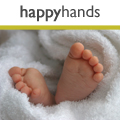Toddler Clinic
Guide to rashes
Small children get rashes all the time. Often they are just a passing irritation caused by getting too hot or sweaty, but sometimes they are a sign of something you should get checked out.
Dry skin and eczema
Dry skin can be caused by cold weather and dry air. You may notice it appear in small patches on your baby’s body or arms once the weather turns more chilly and the central heating goes on. Try to keep your child’s bedroom airy even in cold weather or if the heating needs to be on, get a small humidifier or place a bowl of water on the radiator to generate moisture in the air.
Childhood (infantile) eczema is quite common and usually appears around the creases at the elbows or knees, around the ankles or the face and hands. In some cases using non-bio washing products, avoiding bath foam and shampoo and using an aqueous cream to moisturise the skin can all really help. If the problem gets worse, see your GP.
Nappy rash
Although smaller babies are prone to nappy rash, this can still occur in toddlers. Make sure you change your child’s nappy regularly, avoid using wipes too often and use water to clean after wet nappies. After baths and changing allow your toddler to roam nappy-free for as long as possible. Use a good, natural nappy rash cream until the rash clears up.
Heat rash
Babies’ and toddlers’ bodies are not very efficient at regulating temperature and you might notice light red rashes sometimes appear on your child’s tummy, face, neck or arms. These usually fade after a few hours once you have calmed and cooled your child, but if the rash does not go away after about 12 hours or so, speak to your GP.
Make sure you keep your child hydrated with water or milk when he is active, try to keep rooms from getting too hot and stuffy, avoid going outside at very hot times of the day, and dress your child in layers of cotton clothes rather than one thick layer that can’t easily be adjusted as the temperature gets hotter or colder.
Allergies
Small children can have an allergic reaction to all kinds of things that they will overcome as they grow. An allergic reaction might appear as itchy, red blotches of raised skin, with white patches in the centre. If your child’s face goes red and any part of his body appears swollen, call your doctor or NHS Direct (0845 4647) immediately in case a severe reaction requires emergency help. In most cases, avoiding the known cause of a reaction will help and mild reactions may be treatable with an infant-safe antihistamine that your doctor can recommend.
Teething rashes
Some toddlers might suffer as babies do, with a bout of nappy rash or red cheeks when they are teething. If there are other signs of teething like dribbling, crying and chewing discomfort, try to soothe this with a calming quiet time feed, a favourite toy to safely suck on, or a natural teething balm available from most pharmacies.
Rashes caused by infection
Meningitis is a worry for many parents but happily is not common. Take a glass and run it across the rash. If the rash disappears under the pressure of the glass then it should not be a cause for worry. If the rash is still visible under the glass as you press on it, seek emergency medical help or call NHS Direct (0845 4647).
Other diseases like chickenpox and measles cause rashes and may be accompanied by a high temperature (over 38°C), lethargy, an unwillingness to eat or drink and other symptoms of sickness. If this is the case, soothe your child and contact your GP.
Related Articles
Games to play with toddlers and preschoolers
BornFree – the natural approach to bottles
Buyer's guide to nappy rash treatments
Business profile: Sally Robertson – Organic at Heart
Sumtastic - what's it all about?
What better way to celebrate the Royal Wedding
Relax with a low-calorie rosehip flavoured juice
Related Products
Weleda, Stretch Mark Massage Oil
Amoralia, Cupcake Underwired Nursing Bra
Little Clothing Company, Box Upon a Time
Related Forum Topics
Forums: Toddlers
Re: Try this perfect family lunch in Hyde Park
Laura, Mother of 2, London
Re: Cranial massage
Clare, Mother of 2, London
Re: Black-out curtains aren't enough!
pen4, Mother of 2, Nottinghamshire
Re: fussy eater
Clare, Mother of 2, London
Re: does any1 know anything that will help me get my baby into a better sleep routen?
clarejayne, Mother of 1, Nottinghamshire
Have Your Say
Be the first person to comment on this article, just post a comment below.





In order to post a comment you need to be a member. Join Now | Sign in